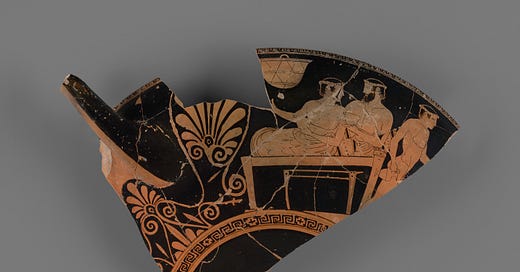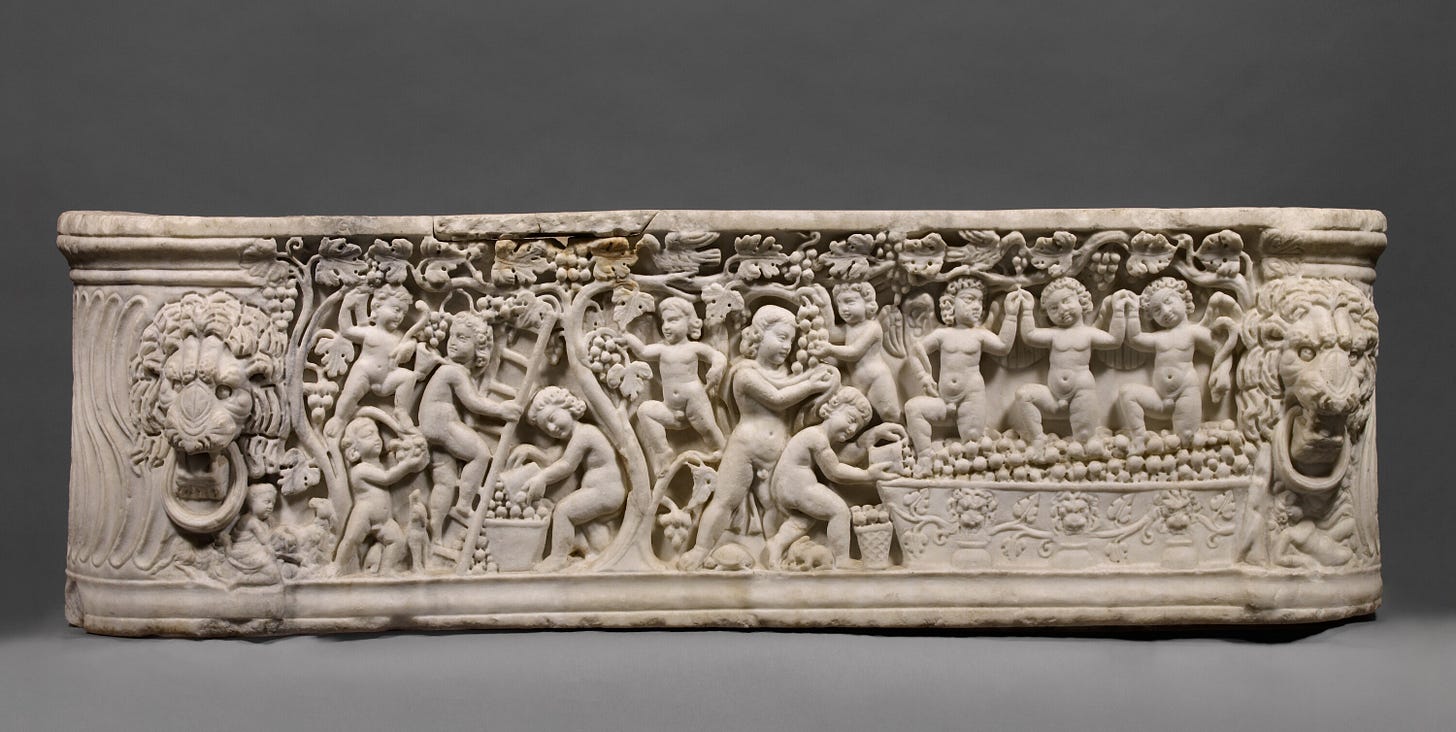In our modern world, wine can be seen as many things, a sign of class and sophistication, a way to connect with friends, and a billion-dollar industry around which entire cities and regions are built; but what did it mean to our ancient ancestors, those who first cultivated and spread the vine? While it may seem like we are a bit wine-obsessed today, it is nothing compared to the central role that wine played in the lives of the ancients, both as an everyday drink and as a religious sacrament. We can see this role in the art the ancients left behind, specifically the vases, carvings, and drinking vessels used by everyone from the poorest slave to the richest nobleman. At the heart of it all was the passionate and mysterious Dionysos, god of wine, theater, and the mysteries of rebirth. In this, the first of two articles, we will examine the role of wine in Ancient Greece; from its production and history to its social and religious function as seen through the wondrous collection of ancient vases and sculptures at the Getty Villa.
The drinking of fermented beverages is one of the oldest arts of humanity and sprouts up in many times and places around the world. The first fermented drink found in ancient Greece was a kind of mead or fermented honey. Probably first discovered in ancient caves, mead is so thick and nutritious that it can replace a meal and was also used as a preservative in winter. Its golden color and preservative qualities would connect it to the divine, which would continue to be associated with fermentation in the ensuing centuries. Wine would overtake mead as the popular drink in Greece by around 1700 B.C. becoming an important part of the economy. It was the Minoans who connected the arrival of wine with the god Dionysos for the first time, and though it had been invented by the Phoenicians, the Greeks were the first to build a culture around wine and perfect its cultivation. They studied the soil, sunlight, and local water sources, writing many books on the “correct” cultivation of wine grapes and the best regions to grow them.
Unknown (Roman). Sarcophagus representing a Dionysiac Vintage Festival, A.D. 290–300. Marble. Object: 53.1 × 190 × 23 cm (20 7/8 × 74 13/16 × 9 1/16 in.), Object (top): 56.9 cm (22 3/8 in.), Object (bottom): 53.1 cm (20 7/8 in.) The J. Paul Getty Museum, Villa Collection, Malibu, California. 2008.14.
Keep reading with a 7-day free trial
Subscribe to Art Muse LA Premium to keep reading this post and get 7 days of free access to the full post archives.




